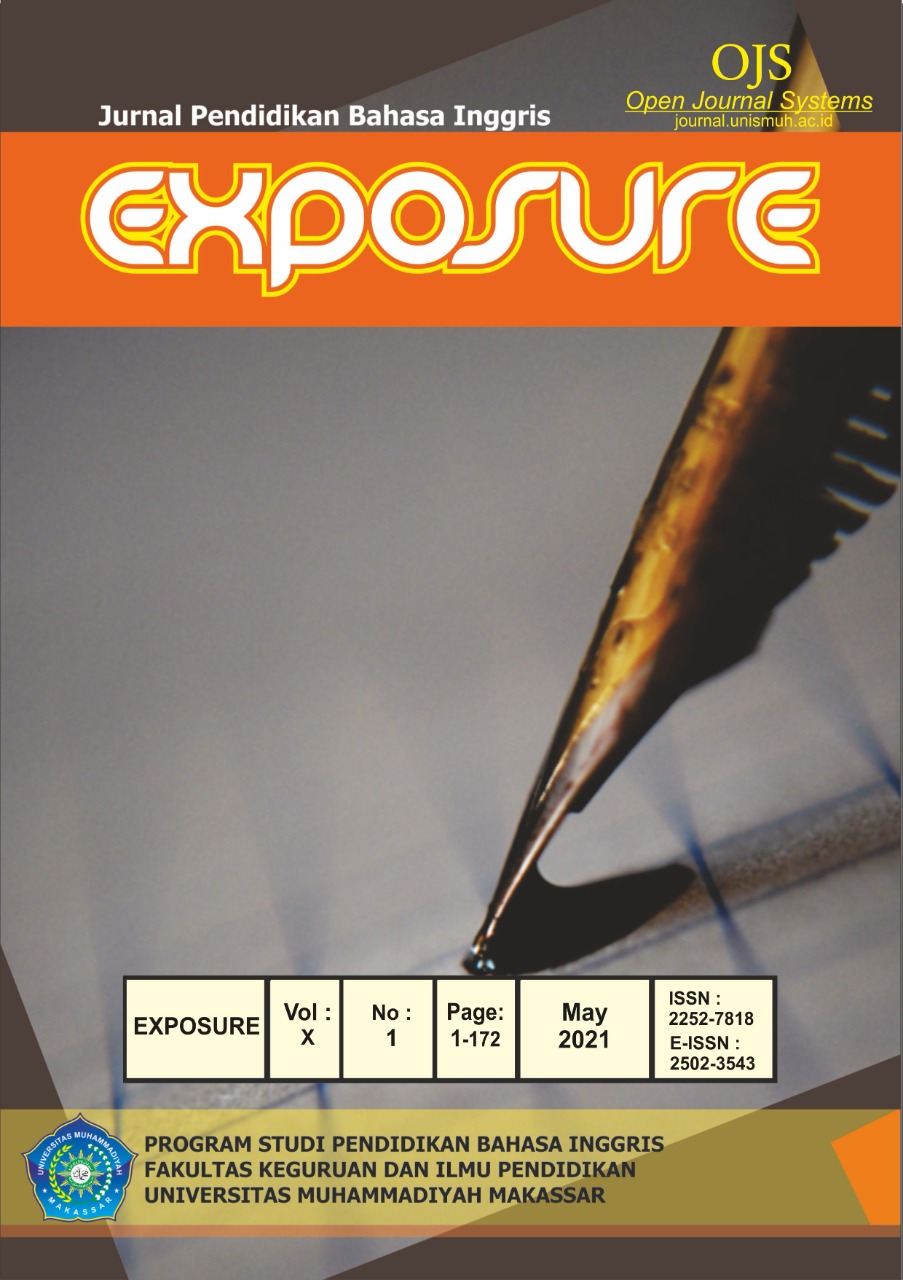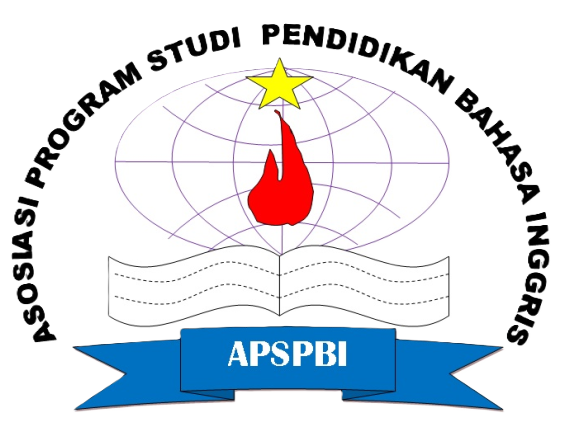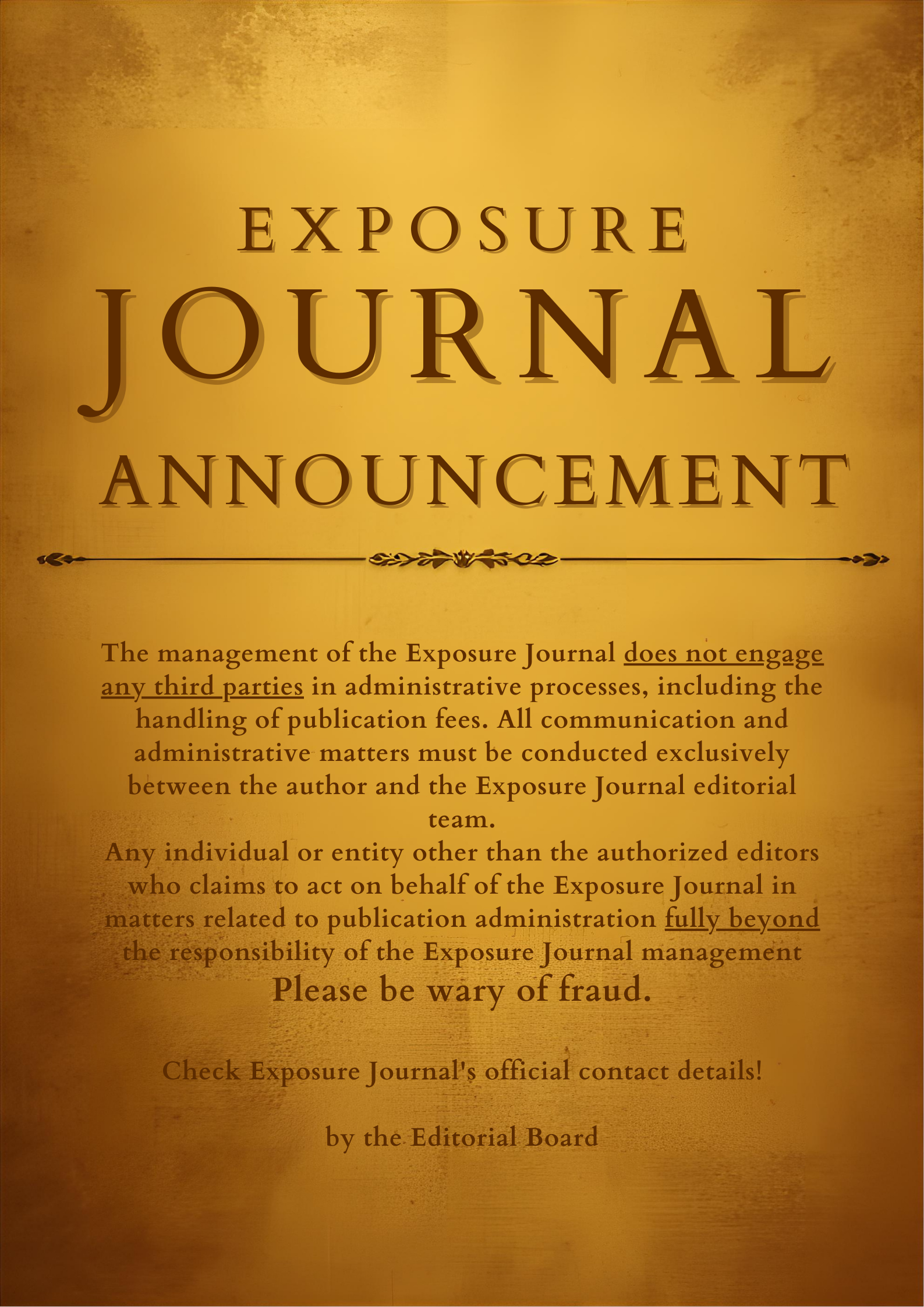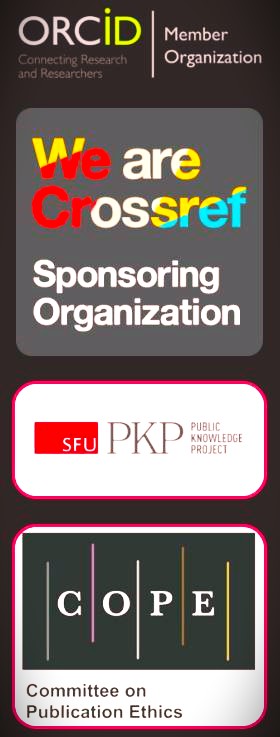A DESIGN OF SPEAKING ASSESSMENT RUBRIC FOR ENGLISH IMMERSION CAMP
DOI: https://doi.org/10.26618/exposure.v10i1.4708
English Immersion Camp, Speaking Rubric, Validity, Reliability, Authenticity
Abstract
The aim of this mix-method study is to design a speaking assessment rubric for an English Immersion Camp (EIC) program in Muhammadiyah University of North Maluku called UMMU English Immersion Camp (UEIC). In UEIC, there were seven activities applied for triggering the participants to continuously speak English during the program (see Syahidah, Umasugi, & Buamona, 2019). However, the program did not have a proper assessment form to measure the UEIC participants’ speaking development. Therefore, this study was administered to design the assessment in the form of a speaking rubric. Three instruments were used to gather the data for designing the rubric. Interviews were adminstered to two experts of English language assessment who have been having years of experince in teaching English at the university. Document analyses were done to analyze the UEIC syllabus from previous studies and speaking rubrics from various sources to make a match between the design of the assessment instrument with the UEIC achievement targets, objectives, materials, and learning techniques. Observations were conducted by four observers who were fasilitators at the UEIC to measure the participants’ speaking progress. Data from obervations were used to test the validity and reliability of the rubric. The speaking assessment rubric was designed based on the steps of designing speaking assessment proposed by O’Malley and Pierce (1996) which are identifying the purposes of speaking assessment, planning speaking assessment, developing speaking test rubric and setting standards. The rubric contained ten items divided into six aspects of speaking assessments namely (1) grammar, (2) vocabulary, (3) pronunciation, (4) fluency, and (5) comprehenesibility respectively represented into two items, and (6) accuracy measured by three items. Moreover, the validity and reliability analyses showed that the rubric containing 10 items were valid and reliable because all values needed have reached the theoretical standard value for validity and reliability of a speaking test instrument.
References
Aiken, L. R. (1985). Three Coefficients for Analyzing the Reliability, and Validity of Ratings. Educational and Psychological Measurement, 45, 131-142.
American Psychological Association. (1954). Technical recommendations for psychological tests and diagnostic techniques. Washington, DC: American Psychological Association.
Bachman, L. F. (1990). Fundamental considerations in language testing. Oxford: Oxford University Press.
Brown, H. D. & Abeywickrama, P. (2010). Language Assessment, Principles and Classroom Practices (2nd ed.). White Plains, NY: Pearson Education, Inc.
Brown, H. Douglas. 2004. Language Assessment: Principles and Classroom Practices. New York: Pearson Education, Inc.
Brown, J. D. (1995). The Elements of Language Curriculum. Boston: Mass. Heinle&Heinle Publishers.
Cronbach, L. J., & Meehl, P. E. (1955). Construct validity in psychological tests. Psychological Bulletin, 52, 281–302. https://doi.org/10.1037/h0040957
Douglas, D. (2010). Understanding Language Testing. New York: Hodder Education.
FPHLCC Language Program Handbook Development Team. (2010). An Immersion Handbook. Brentwood Bay: First Peoples’ Heritage, Language and Culture Council. Tersedia online di www.fpcc.ca/files/PDF/culture-camps-handbook.pdf (Diakses pada 13 April, 2018)
Harmer, J. (2007). How to Teach English (New Edition). Essex: Pearson Education Limited.
Hughes, A. (2003). Testing for Language Teachers. Cambridge: Cambridge University Press.
Hutchinson, T. & Waters, A. (1987). English for Specific Purposes: A Learning-centered Approach. Cambridge: Cambridge University Press.
Krashen, S. D. (1982). Principles and Practice in Second Language Acquisition. Oxford: Pergaman Press.
Luan, Y. & Guo, X. (2011). A Study on the Application of the Immersion Teaching Model to EFL Learners in Institutions of Higher Education. Canadian Center of Science and Education, 4 (1), 152-161.
Mazouzi, S. (2013). Analysis of Some Factors Affecting Learners’ Oral Performance. A Case Study: 3rd Year Pupils of Menaa’s Middle Schools. M. A. Dissertation, Department of Foreign Languages, English Division, Faculty of Letters and Languages, Mohamed Khider University of Biskra, People’s Democratic Republic of Algeria.
Nation, P. & Macalister, J. (2010).Language Curriculum Design.New York: Routledge.
Nunan, D. (1995). Language Teaching Methodology: A Textbook for Teachers. NY: Phoenix Ltd., p. 593.
Rossell, K. (2000). The Design and Implementation of an English Immersion Program. In The ABC’s of English Immersion, A Teacher’s Guide. Washington: Center for Equal Opportunity.
Siano, J. (2000). Teaching Juan and Maria to Read. In The ABC’s of English Immersion, A Teacher’s Guide. Washington: Center for Equal Opportunity.
Syahidah, U., Umasugi, F. & Buamona, Z. (2019). A Design of English Immersion Camp for Supplementing English Teaching and Learning in Indonesia. ELS Journal on Interdisciplinary Studies in Humanities, 2(1), 102-109.
Downloads
Published
How to Cite
Issue
Section
License
Authors who publish with this journal agree to the following terms:
In order to assure the highest standards for published articles, a peer review policy is applied. In pursue of the compliance with academic standards, all parties involved in the publishing process (the authors, the editors and the editorial board and the reviewers) agree to meet the responsibilities stated below in accordance to the Journal publication ethics and malpractice statement.
Duties of Authors:
- The author(s) warrant that the submitted article is an original work, which has not been previously published, and that they have obtained an agreement from any co-author(s) prior to the manuscript’s submission;
- The author(s) should not submit articles describing essentially the same research to more than one journal;
- The authors(s) make certain that the manuscript meets the terms of the Manuscript Submission Guideline regarding appropriate academic citation and that no copyright infringement occurs;
- The authors(s) should inform the editors about any conflict of interests and report any errors they subsequently, discover in their manuscript.
Duties of Editors and the Editorial Board:
- The editors, together with the editorial board, are responsible for deciding upon the publication or rejection of the submitted manuscripts based only on their originality, significance, and relevance to the domains of the journal;
- The editors evaluate the manuscripts compliance with academic criteria, the domains of the journal and the guidelines;
- The editors must at all times respect the confidentiality of any information pertaining to the submitted manuscripts;
- The editors assign the review of each manuscript to two reviewers chosen according to their domains of expertise. The editors must take into account any conflict of interest reported by the authors and the reviewers.
- The editors must ensure that the comments and recommendations of the reviewers are sent to the author(s) in due time and that the manuscripts are returned to the editors, who take the final decision to publish them or not.
Authors are permitted and encouraged to post online a pre-publication manuscript (but not the Publisher’s final formatted PDF version of the Work) in institutional repositories or on their Websites prior to and during the submission process, as it can lead to productive exchanges, as well as earlier and greater citation of published work (see The Effect of Open Access). Any such posting made before acceptance and publication of the Work shall be updated upon publication to include a reference to the Publisher-assigned DOI (Digital Object Identifier) and a link to the online abstract for the final published Work in the Journal.














